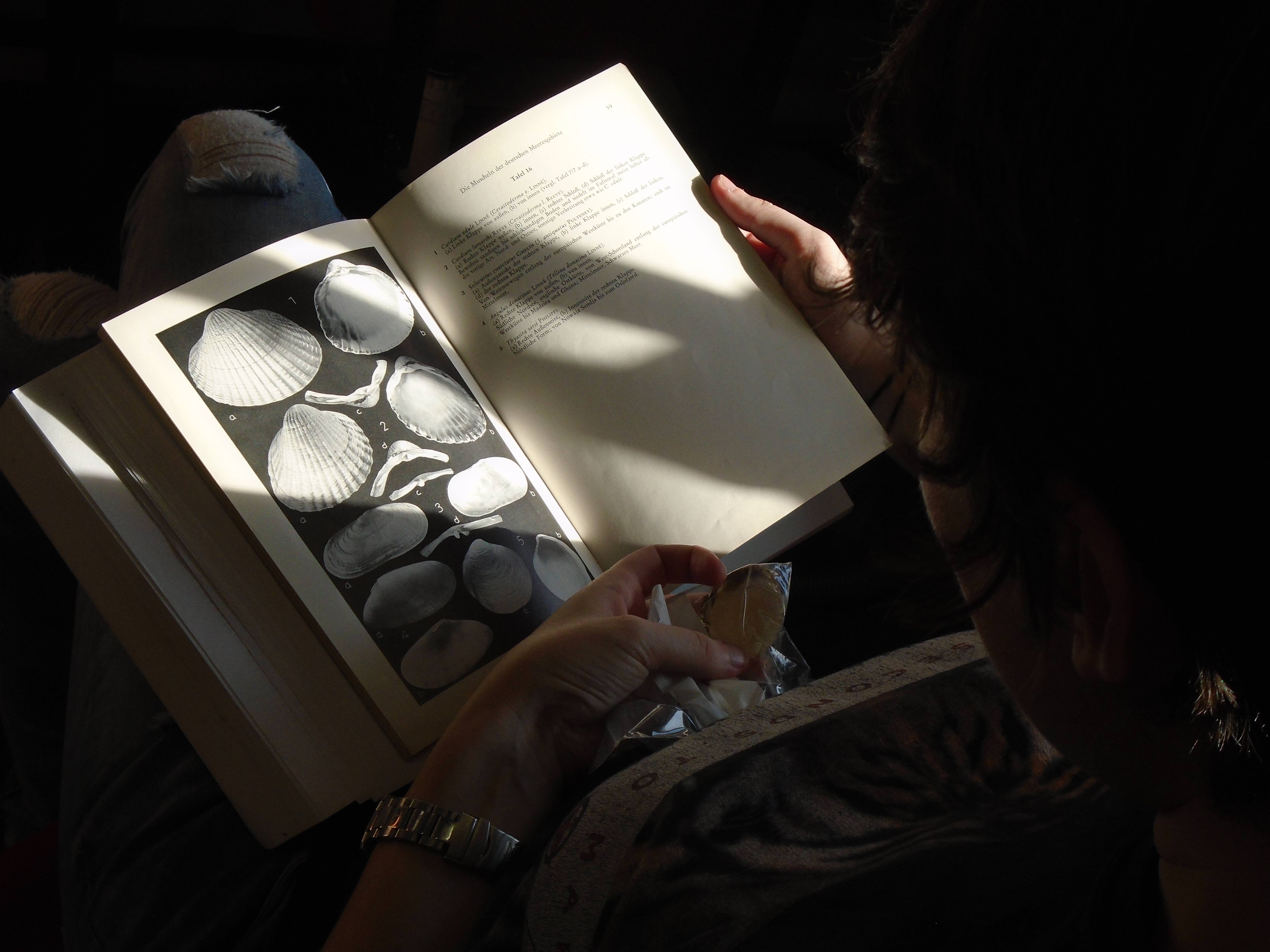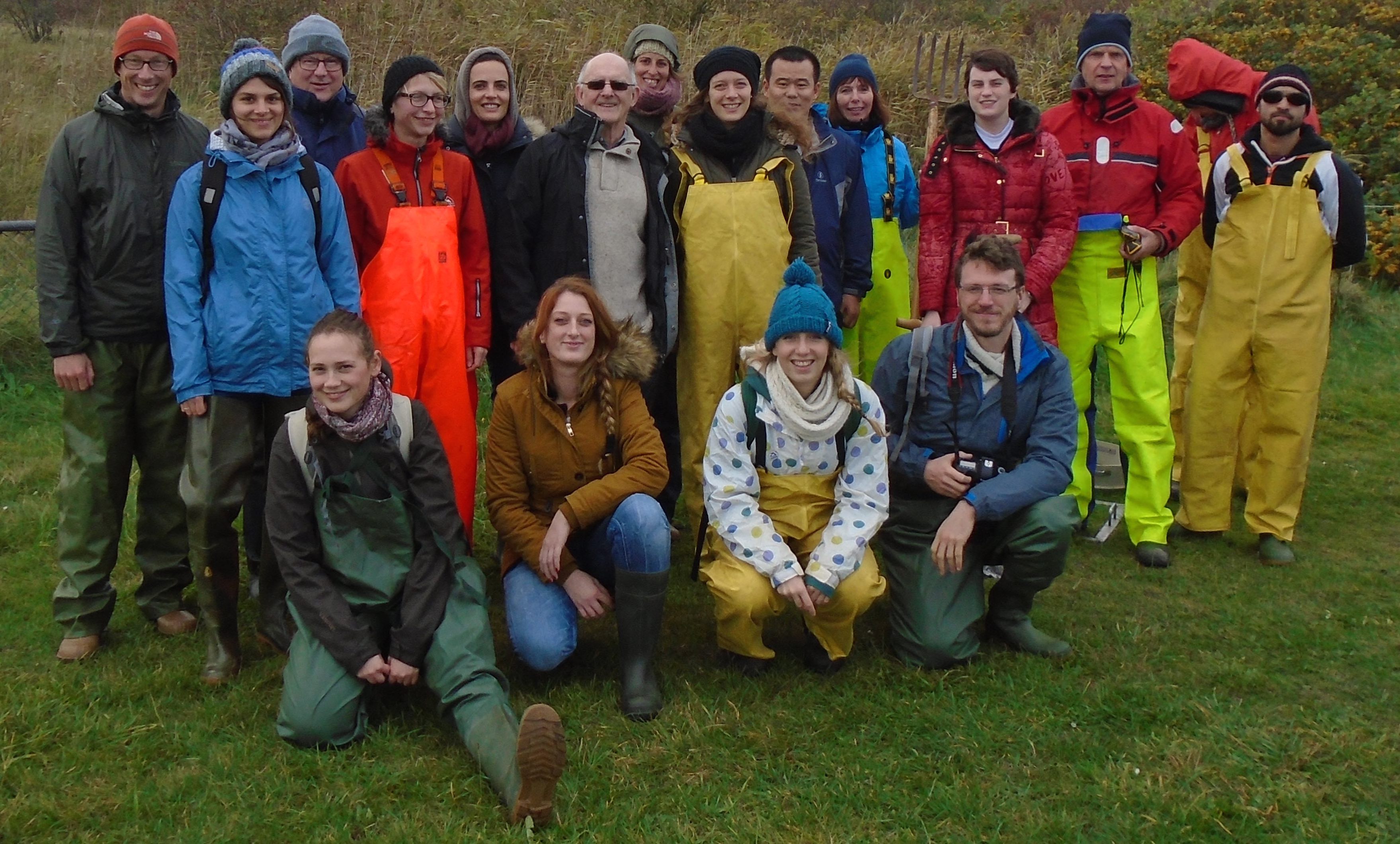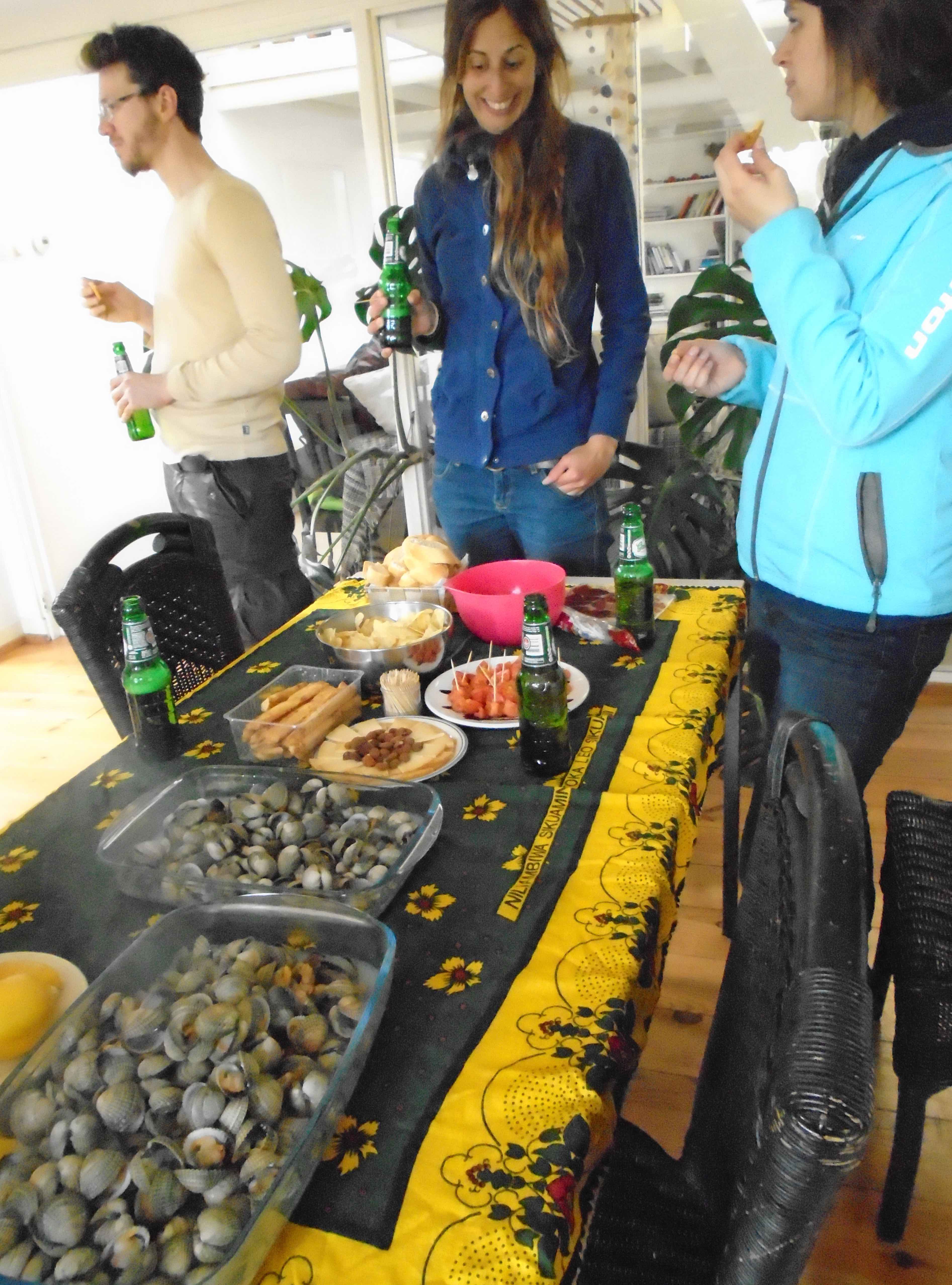 Students at the workshop competed in two teams to see who could correctly identify clams to the descriptions and pictures in Norman Tebble’s 1976 classic British Bivalve Seashells. Credit: Courtesy photo, ARAMACC.Some scientists can pick up a seemingly obscure clam and tell you a fascinating story just by looking at the lines on the shell. It’s a little more complicated than that, but the general pretense holds true. These scientists-turned-storytellers use the lines of clams to understand how the overlying water and its chemistry changed throughout the clam’s lifetime. This technique is related to dendrochronology, which uses tree rings to understand the climate that occurred while the tree was growing.
Students at the workshop competed in two teams to see who could correctly identify clams to the descriptions and pictures in Norman Tebble’s 1976 classic British Bivalve Seashells. Credit: Courtesy photo, ARAMACC.Some scientists can pick up a seemingly obscure clam and tell you a fascinating story just by looking at the lines on the shell. It’s a little more complicated than that, but the general pretense holds true. These scientists-turned-storytellers use the lines of clams to understand how the overlying water and its chemistry changed throughout the clam’s lifetime. This technique is related to dendrochronology, which uses tree rings to understand the climate that occurred while the tree was growing.
Dr. Bryan Black, a UTMSI ecologist, is an expert in reading between the lines of a clam. He uses clams to generate growth-increment chronologies. When these data are combined with long-term data from other animals like fish and birds, it can help establish the long-term effects of climate and human use on ecosystem functioning. By using live and dead-collected clams, Dr. Black can also learn what the climate was like prior to the start of instrumental records – that’s before 1850!
 The workshop participants conducted fieldwork (led by Rob Witbaard and Chris Richardson) to investigate the variability of shellfish distribution. They took advantage of some decent weather to step out of the classroom to a nearby tidal flat where they collected cockles along three 300 metre transects then took them back to the lab to measure them and assess the length frequency distribution along the transects. Credit: Courtesy photo, ARAMACC.Dr. Black was a guest instructor and speaker for ARAMACC, which is an international collaboration whose goal is to use shells of very long-lived mollusks (clams) as a record of environmental change in the northeast Atlantic Ocean over the past thousand years. The group is funded by the European Union and includes scientists from Croatia, France, Germany, the Netherlands, Norway, Portugal and the UK.
The workshop participants conducted fieldwork (led by Rob Witbaard and Chris Richardson) to investigate the variability of shellfish distribution. They took advantage of some decent weather to step out of the classroom to a nearby tidal flat where they collected cockles along three 300 metre transects then took them back to the lab to measure them and assess the length frequency distribution along the transects. Credit: Courtesy photo, ARAMACC.Dr. Black was a guest instructor and speaker for ARAMACC, which is an international collaboration whose goal is to use shells of very long-lived mollusks (clams) as a record of environmental change in the northeast Atlantic Ocean over the past thousand years. The group is funded by the European Union and includes scientists from Croatia, France, Germany, the Netherlands, Norway, Portugal and the UK.
During a recent workshop at the Netherlands Institute of Sea Research, Dr. Black shared his clam reading knowledge with students, professors and researchers involved in ARAMACC. The scientists learned how to identify clams, merge biological and climate records, use statistical techniques to make sure the records are correct, and also how to conduct fieldwork to collect the common cockle. At the end of the workshop the team brainstormed about new project ideas and how they might collaborate in studies that span the Atlantic and Pacific.
Dr. Black and many members from the ARAMACC team will be presenting their research at the next International Sclerochronology Conference, which will be held in Maine in May 2016.
 Workshop participants got to sample the “research specimens”, cockles, after a grueling but enlightening week of discussions and learning. Credit: Courtesy photo, ARAMACC.
Workshop participants got to sample the “research specimens”, cockles, after a grueling but enlightening week of discussions and learning. Credit: Courtesy photo, ARAMACC.